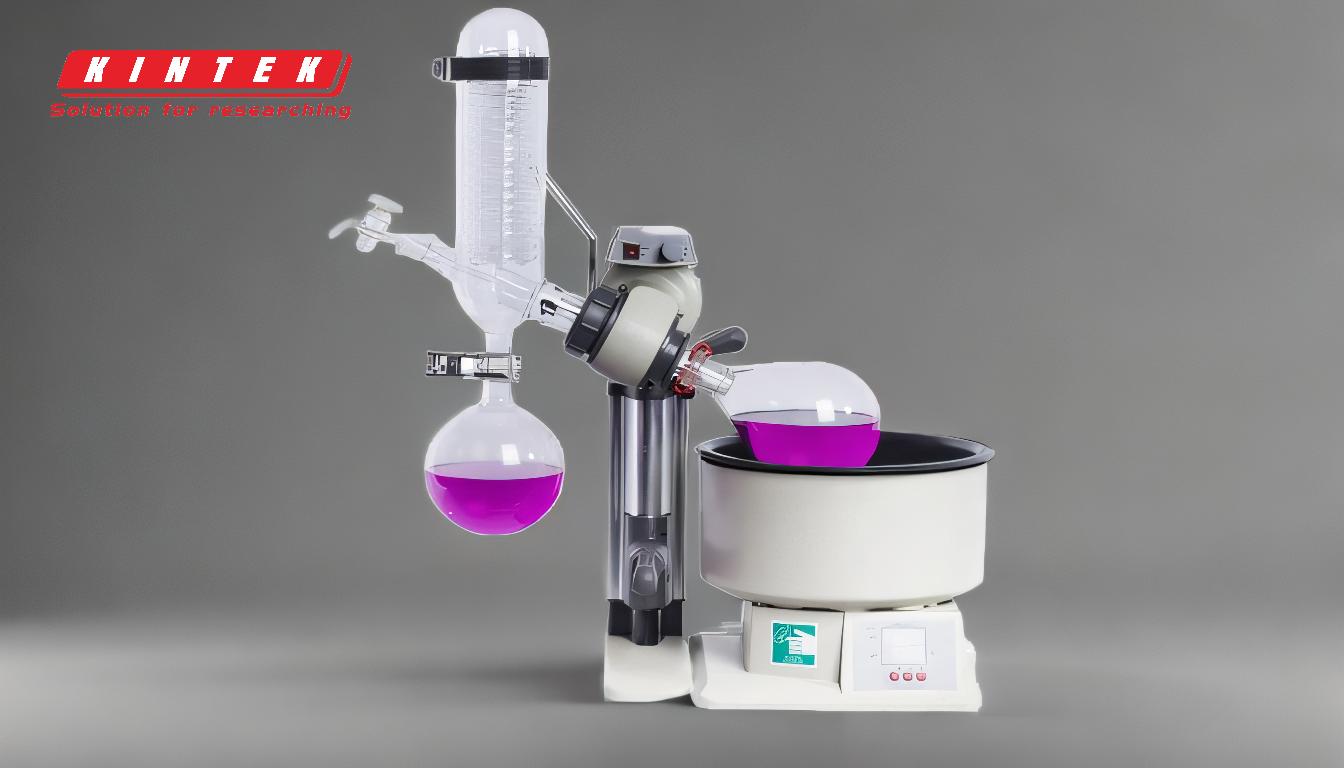The vacuum in a rotary evaporator plays a crucial role in lowering the boiling point of solvents, enabling their evaporation at reduced temperatures. This process is essential for separating solvents from compounds without exposing them to excessive heat, which could degrade sensitive materials. By reducing the pressure within the system, the vacuum facilitates gentle and efficient evaporation, making it a key component in laboratory processes like solvent recovery, concentration, and purification. Additionally, the vacuum system prevents volatile vapors from escaping into the environment, ensuring safety and minimizing potential hazards.
Key Points Explained:

-
Lowering the Boiling Point of Solvents:
- The vacuum reduces the pressure inside the rotary evaporator, which directly lowers the boiling point of the solvent. This allows solvents to evaporate at much lower temperatures than they would under normal atmospheric pressure.
- For example, water, which typically boils at 100°C at 1 atm, can boil at significantly lower temperatures (e.g., 40–50°C) under reduced pressure. This is particularly useful for heat-sensitive compounds that might degrade at higher temperatures.
-
Gentle Evaporation of Solvents:
- By lowering the boiling point, the vacuum enables gentle evaporation of solvents without the need for excessive heat. This is critical for preserving the integrity of sensitive compounds, such as pharmaceuticals, natural extracts, or flavor compounds.
- The reduced temperature also minimizes the risk of thermal decomposition or unwanted chemical reactions, ensuring the purity and quality of the final product.
-
Separation of Solvents from Compounds:
- The vacuum facilitates the separation of solvents from the target compounds. As the solvent evaporates at a lower temperature, it is collected in the condenser, leaving behind the concentrated or purified compound in the flask.
- This process is widely used in applications like solvent recovery, concentration of solutions, and purification of chemical compounds.
-
Safety and Environmental Benefits:
- The vacuum system prevents volatile vapors from escaping into the air, reducing the risk of exposure to hazardous chemicals. This is especially important when working with toxic or flammable solvents.
- By containing the vapors within the system, the rotary evaporator ensures a safer working environment and minimizes environmental contamination.
-
Types of Vacuum Systems:
- The vacuum system in a rotary evaporator can range from simple setups, such as a water aspirator with a cold trap, to more complex systems involving mechanical vacuum pumps and refrigerated traps.
- The choice of vacuum system depends on the specific requirements of the process, such as the volatility of the solvent and the desired level of vacuum.
-
Control and Ventilation:
- The vacuum is typically controlled using a stopcock located at the highest point of the condenser. This allows for precise regulation of the pressure within the system.
- After the solvent has been removed, the vacuum system is used to ventilate the configuration, restoring normal pressure and allowing for safe removal of the sample.
-
Applications in Various Fields:
- Rotary evaporators with vacuum systems are widely used in chemistry, biochemistry, pharmaceuticals, and food science. They are essential for processes like solvent removal, concentration of extracts, and purification of compounds.
- The ability to work at lower temperatures makes rotary evaporators particularly valuable for heat-sensitive materials, such as natural products or bioactive compounds.
By understanding the role of the vacuum in a rotary evaporator, users can optimize their processes for efficiency, safety, and quality, ensuring successful outcomes in their laboratory work.
Summary Table:
| Key Role of Vacuum | Benefits |
|---|---|
| Lowers boiling point of solvents | Enables evaporation at reduced temperatures, preserving heat-sensitive compounds. |
| Facilitates gentle evaporation | Prevents degradation of sensitive materials like pharmaceuticals and extracts. |
| Separates solvents from compounds | Essential for solvent recovery, concentration, and purification processes. |
| Enhances safety | Prevents volatile vapors from escaping, reducing exposure to hazardous chemicals. |
| Versatile applications | Used in chemistry, biochemistry, pharmaceuticals, and food science. |
Optimize your lab processes with the right rotary evaporator—contact our experts today!










